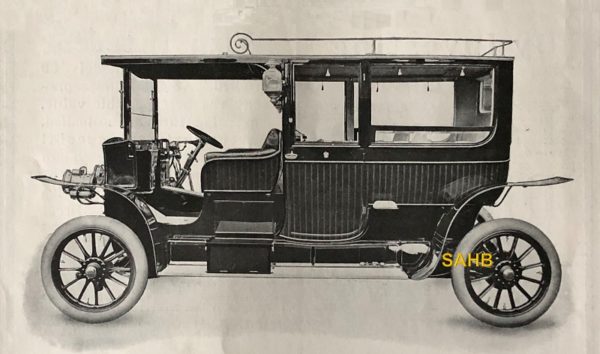
The N.E.C. was remarkable above all for its unusual layout. Its two-stroke engine with horizontally opposed cylinders was neatly mounted under the floor.
The New Engine Co. Ltd. was founded in 1903 to make two-stroke aero engines, designed by G.F. Mort. The first premises were no more than a small workshop in Reading staffed by Mort, his brother J. Charles Mort and two employees. They moved to larger premises in Acton in 1904. Aero engines were made until at least 1913 and were supplied to such manufacturers as A.V. Roe and Shorts, whose Wright-type biplane of 1910 was powered by an N.E.C. V4 of 50hp.
Cars were built from 1905 and always had the same configuration: underfloor engine and no bonnet, a two-speed (from 1906 3-speed) gearbox and shaft drive to the rear axle. Engines were either two- or four-cylinder; for parts interchangeability they only ever had two cylinder sizes: 114 x 114mm and 127 x 114mm. The range was therefore from 15 and 20hp twins (made from 1905 to 1911) to 30 and 40hp fours from 1907 to 1914.
The long wheelbase, with all seating between the wheels, gave an exceptionally comfortable ride; the N.E.C. was described in 1906 by Country Life as “possibly the most comfortable motor carriage on the market.”
Our Snapshot dates from 1908, when the company were making this claim of unsurpassed comfort in their publicity: “…by far the most comfortable cars on the road – the car on which the passengers feel no road shock.” They backed this up with testimonials from satisfied customers, with quotes such as this one from ‘An Experienced Motorist who keeps several cars’: “I am very pleased with the car, which is all you claim for it.” Other owners praised hill-climbing ability (“I went up a hill, 1 in 7, 600 yards long, with a load just splendidly”) and reliability (“The car has run beautifully all the long journey north without a second’s delay”).
Most N.E.C.s were tourers or town cars with limousine or landaulette bodies – there were a few two-seaters on a shorter wheelbase. All bodies were made by the company at the Acton works.
Production was limited to around 100 cars a year, but the company exhibited regularly at Olympia and advertised extensively in the motoring press. G.F. Mort died in 1911 and his brother continued car manufacture until 1920, but post-war cars were probably built up from existing parts stock. N.E.C. then moved into manufacture of patent universal drilling tables, hand milling machines, general engineering and car components.
Photo courtesy of The Richard Roberts Archive.



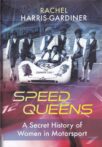
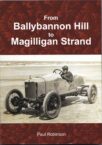
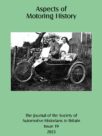
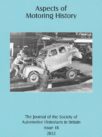
Leave a Comment